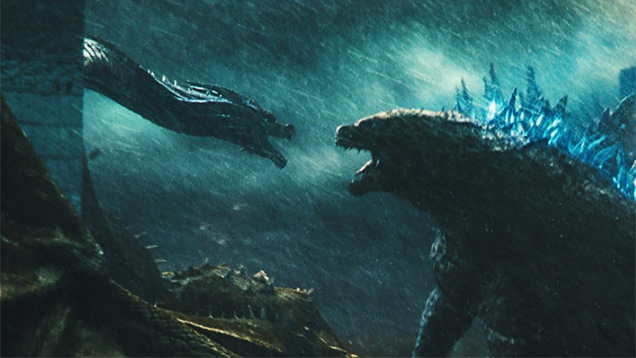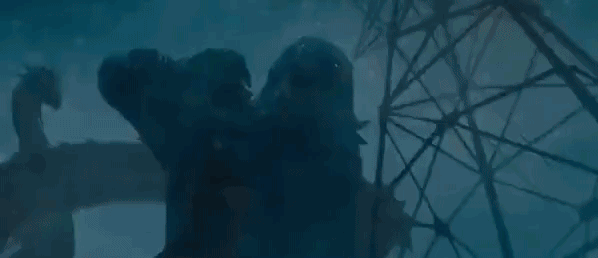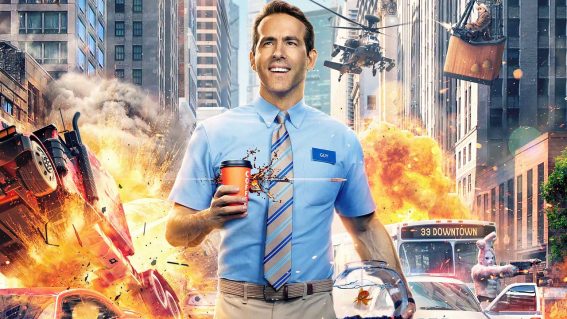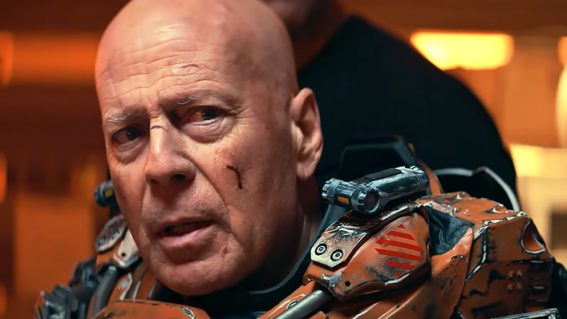Godzilla II is a royal tumble of titanic monsters and very confused humans


It’s a royal rumble of titanic monsters, as the iconic Japanese sea creature Godzilla confronts a slew of giant prehistoric foes and some very confused humans. There’s a degree of spectacle but it’s a misshapen movie, writes critic Craig Mathieson.
Several times in this monster mash-up, the film will cut to a medium close-up of Godzilla, fixing on the oversized sea creature as he takes a break from his latest rumble with another of mythic Titans that have returned to life to topple skyscrapers and crush civilisation. The digital creature has a steady, blank gaze – obviously he’s seen a few things – but there’s no real inner-life to him, outside the destruction he causes or sometimes counters. That’s a problem for Michael Dougherty’s scaly blockbuster, because it keeps trying to assign motivation, values, and even beliefs to the radiation-ripped beast. He’s a blank slate nothing permanent can be written on.
With 2014’s Hollywood reboot Godzilla, Gareth Edwards skilfully exploited that unknowable distance. The scale was human – the characters ran and dodged in the debris and dusty surrounds of Godzilla and his eventual adversaries – and when the monsters were revealed, after an admirable period of menacing restraint, their otherworldly scale rendered humanity and its toys insignificant. The sequel has many more monsters, and many more battles. Like an old 16-bit fighting game, Dougherty shoots Godzilla and his latest opponent in city-wide profile; you half expect them touch claws before they come out punching.

Having ‘saved’ – i.e. devastated – San Francisco from a pair of Massive Unidentified Terrestrial Organisms five years prior, Godzilla is a source of hope and a transformative figure in the new films. As more Titans are revealed they’re set free by eco-terrorists led by a former British soldier, Alan Jonah (Charles Dance, himself a giant of scenery chewing), who believe that the Titans will save a dying planet by reducing the plague of humanity and sparking regrowth through their radiation-fuelled bodies. That is a step short of worshipping these monsters, whose selections such as King Ghidorah will delight long-time Godzilla fans, and there’s a wild mix of paganism and nihilistic abdication lurking here that the movie, not unsurprisingly, doesn’t want to get into.
Instead the framework is a divided family, with Jonah kidnapping one scientist who’s been helping the international agency Monarch study the dormant Titans, Dr Emma Russell (Vera Farmiga), along with her teenage daughter Madison (Millie Bobby Brown). That necessitates Madison’s father, Emma’s ex-husband and former Monarch scientist Mark Russell (Kyle Chandler), returning to the fold, growing increasingly more angry (Chandler has such an expressive jaw) as the extent of the Titans becomes destructively clear. Everyone, including the characters played by Ken Watanabe and Sally Hawkins in the first film, race around the globe from one clash to the next, complete with a MacGuffin-like box that’s super crucial (and thus easily stolen by an angry teenager).
Yet it’s all strangely ineffectual – there’s no physicality to the fighting and no wonder to the creatures’ rise. Dougherty signals as much by repeatedly cutting away to scrambling humans or deeply ineffectual jet fighters that are mere mosquitoes. The film even has two comic relief archetypes: Bradley Whitford as the freaked-out white scientist and O’Shea Jackson Jr as the phlegmatic black soldier. Both actors are better than those roles require, but then everyone – and everything – in this film is reduced to their basic tenets; that look of furious focus Millie Bobby Brown trademarked in Stranger Things is showcased here. “You need to see this,” one bit player after another urges the main characters, but the reveals in Godzilla II: King of the Monsters never really linger, let alone inspire. A blank slate is nothing until it’s filled in.













